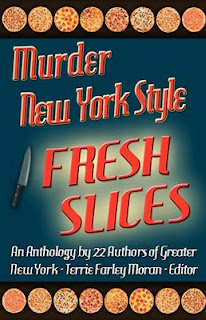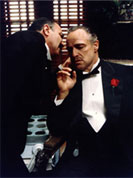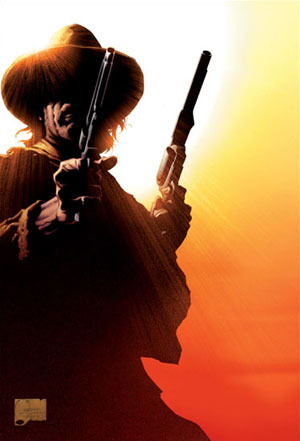by Dixon HillHi . . . my name is Dixon . . . and I'm a martian.
The litany above may be familiar (if slightly changed) to some of you, if you've attended certain meetings.
I've never actually been to one of those meetings, though I have a relative who's been attending at least once a week for years -- as well as an ex-girlfriend who attended meetings; she and I were very close for a long time.
In the words of Monty Python, however: "And now . . . for something completely different ..."


My name is Dixon ... and I'm a Martian -- because I'm a man.
Men and women are different. I'm not saying one gender is "better" than the other; I'm just saying the two genders are different.
The book
Men are from Mars; Women are from Venus points up some of these differences quite well. My wife and I read it together, out loud, years ago, and the information contained helped to greatly strengthen our marriage.
But, I'm not here to write about marriage. I'm here to write about writing -- writing so that readers will understand and appreciate what they've read.
And, here too, men and women -- it seems to me -- are quite different.
Now I know that in his book, John Gray is talking about the
planets Mars and Venus, but I thought the artwork I found did a little more to accentuate the differences than pictures of planets would. So what you're looking at are the Venus De Milo (left) currently held in the Louvre, and Mars (right) probably made in the 1st Century, and found at the Forum of Nerva, now held by Capitoline Museums, Rome. The god of war. And the goddess of love.
I also know it's dangerous to speak (or write) in generalities when discussing the idea of cross-gender writing, so let me explain up-front that I know different categories of comprehension cross gender lines. For example: while it's often said that men are more easily visually stimulated than women, I'm perfectly willing to agree that many women are just as stimulated by what they see as any man might be--and vice-versa.
It's also often said that women are more focused on "sharing" information than men are. But, I'm sure there are men out there who also enjoy sharing. I myself have learned, over many years of marriage, not to run for the nearest bunker when my wife starts sharing all over the place.
Instead, I now stand my ground and maybe even share a little back -- assuming I can do so without trying to "fix" anything. (As in my wife's complaint: "I'm just sharing why I'm so frustrated at work! I'm not trying to get you to fix anything, you idiot!")
As you may have surmised, I have a weakness: an inability to fully communicate with women.
I didn't even realize I had this problem until I'd been out of the army for about a year, and volunteered to run the annual PTA carnival at my son's school. My son (our oldest--he's 22 now) was in 3rd Grade at the time.
In the army, I had orchestrated large groups of men to accomplish tactical missions or construction projects. And, I usually had to communicate with those men in a language other than English. Sometimes it was Spanish, a couple times it was Arabic. Once, I used a little Twri (a West African Tribal language -- I don't speak much of it), and occasionally in French. So, maybe you can see why I figured I could easily orchestrate the members of my local PTA to run a slam-bang carnival.
I drew up a carnival plan, based on an Army Operations Order -- the planning format I'm most comfortable with. A few months before the carnival, I held a briefing for the PTA -- complete with handouts and slide show -- so people could decide where they might most advantageously "plug into" the operation.
I was actually speaking to a group of about 98% moms, of course, since this was a PTA meeting. Most of them had never set foot on a military installation, so there were a few shocked looks when I initiated my brief with (what I considered to be) the standard admonition: "As this is a complicated operation, the plan will be presented in stages. Please note any operational concerns, which may arise in your mind, on the notepad provided, and hold all questions until the end. I will entertain a question and answer period after the briefing is complete."
To their credit, following my introduction, they took a presentation that started with "Situation" then continued through "Mission" and ventured through such topics as "Actions on the Objective" -- heavily peppered with time-frame notes couched in military terms such as "D minus 5" (Day of the carnival, minus 5; or in other words: "5 days before we would hold the carnival...") -- Well, they took it all with barely a raised eyebrow.
And, after I had answered each of the first three questions by putting up the slide which immediately followed, the PTA moms seemed to realize they might as well hold their questions until the end of my briefing.
I thought this was because they finally understood what was going on. And, my belief was bolstered by a general agreement afterward, that they had no questions because I seemed to have thought of everything. (Their words; not mine.)
I was
slightly concerned, because I'd never presented a briefing in which
no one had any questions, before. But, subsequent discussion clearly indicated these women had paid close attention and understood the plan very well. In no time at all, in fact, everyone was organized, and preparations begun.
I didn't realize my glaring error, until the day of the carnival. That's when I noticed two PTA moms hanging streamers, balloons and other decorations. I slapped the side of my head and exclaimed, "Oh, man! I left decorations totally out of the plan! Why didn't you guys say something?" They told me that they thought I'd been too busy arranging for the fire trucks, bouncy house, monkey bridge, etc. to take care of it; so they decided to just do it on their own.
I realized then that I had not only left out an important part of the plan, I had also presented
myself in a way that made it impossible for these women to find a way to communicate with me. Somehow, the techniques I'd always relied on to ensure good communications, had opened a chasm between us that these good women couldn't find a way to cross. So, they hadn't tried; they'd just fixed the problem themselves
I was grateful that they covered my oversight, but completely dumb-founded by the communications barrier I'd discovered within myself. And, though I've learned a lot since then, I know I've still got a long way to go. This is why I was so bowled over when I read Deborah's article about her friend, Travis Erwin, a man who writes women's fiction.
I really respect a guy who can do that. I have a hard time writing
any stuff that appeals to women. Yet, I know women make up the lion's share of readers, and so struggle mightily to overcome this obstacle in my way.
This is why I change my story if my wife says something like, "You don't describe the women in this very well. I know how big their breasts are, what their hair and eye color are, and how long their legs are -- but you don't really tell me what they
look like. From your description, all I can see is a pair of legs with a set of eyeballs on top, and a hunk of hair tossed over it. Plus maybe a breast or two, but I'm not sure where they're attached. I mean, are the breasts mounted on top of the legs, and the eyeballs stuck on the ends of the breasts like some sort of gross nipples?"
And, this is also why I've occasionally tried to write romance -- because I'm bad at it, and want to get better. And, it seems to me, to be a type of fiction primarily geared toward women readers, an audience I'd really like to learn to write for.
Finding a way to move this women-centric concept into an action-adventure story, however (as many mysteries I write seem to be) often proves daunting. Largely because I'm not a woman, and have a hard time writing things from a female perspective. (Heck! As you can see from what my wife says, I seem to have a hard time even from a man's perspective ... at least from a woman's point of view. But, that's a POV that's pretty important to me.) So, I keep plugging away, trying to find new and different ways to do it.
I found an interesting idea, the other day, called The Final Girl theory. This theory seems to be based on slasher movies, such as
Friday the Thirteenth, or
Halloween, and is the brainchild of Carol Clover, who wrote about it in her book:
Men, Women and Chainsaws: Gender in the Modern Horror Film.I've ordered the book through interlibrary loan, but not yet read it. However, I have done a little research on the theory. The idea here, seems to be that the modern slasher movie starts out from the killer's POV, but later switches to that of the female who will eventually be the sole survivor. Thus, in Halloween, Jamie Lee Curtis is "The Final Girl." And, as such, she's supposed to be (a) virginal, or at least virtuous, (b) smart, (c) curious, (d) vigilant and (e) possibly is related to the killer. [b,c & d are supposed to help her be the "investigating consciousness" of the film. Finally: at the end, she takes up a weapon -- thereby, theoretically "masculinizing" herself through the weapon's phallic symbology.
I've been looking at this idea, and thinking that it might provide a doorway, of sorts, that I might use to access an ability to write a woman into a believable character. The only problem is: I don't find it terribly believable.
To begin with, I can't remember the last time I wrote anything in which I thought: "Now this female character -- she's a virgin." And, as for be masculinized by taking up a weapon ...
Well, that makes me think of a certain woman I studied Arabic with in the army. She'd been a cop in San Francisco before enlisting, and was tough as nails. In fact, I'd trust her cover my flank in a fire-fight or beer-hall brawl any day of the week. But, when we went out on the town, she'd show up in clothes that displayed a figure that would've made many a man whistle, if -- to paraphrase the great Groucho -- it wasn't so hard to whistle with your tongue hanging out. My friend was NOT masculine. But she was tough with her fists -- and good with a weapon.
No. I don't equate women with whimpieness. But, I'm still left working my way slowly toward my goal of writing in a way that truly does appeal to women readers. So, when the book gets here, I'll read it. Maybe it will make more sense to me, or help me in some other way.
Meanwhile, I'll try (again) to attend the local meeting of the Sisters in Crime. They've told me before that they'd welcome me. They put out anthologies I'd love to get a crack at. And, I'm sure I'd learn a lot from having some of them look over my stuff.
But, as a man I feel like an interloper. I mean, this is an organization created to help women writers get published. And, I'm a man. Further: After consideration, I finally decided against visiting Frederick's of Hollywood for one of those inflatable bras Fran writes about in her books; my beard pretty much ruins that brilliant disguise idea.
So ... I'll try it in my own clothes; no disguise.
Maybe this time, I'll actually make it from my car to the meeting. Last time I sat in the parking lot for thirty minutes, then just drove home. I worry about being a bull in a china shop and creating
PTA Moms Redux.
Wish me luck!
--Dix
 By Fran Rizer
By Fran Rizer


























